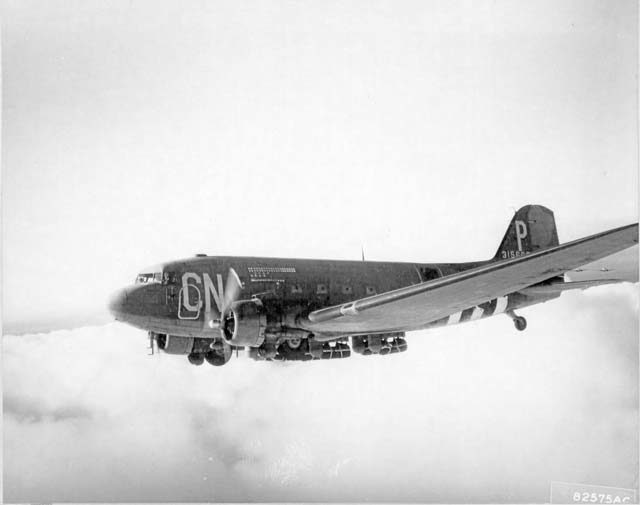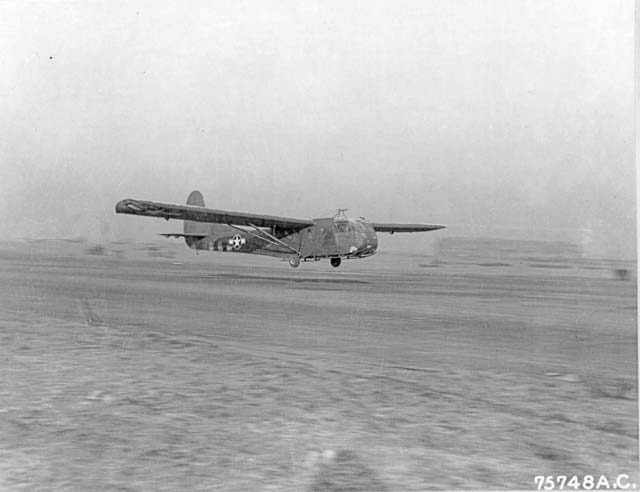
Seventy-five years ago this month the U.S. Army Air Forces activated the 435th Troop Carrier Group at Bowman Field, Kentucky. When the Airmen of the 435th and four assigned troop carrier squadrons — the 75th, 76th, 77th and 78th — assembled for the first time February 25, 1943, they unknowingly began an odyssey that continues to reverberate today. The moment established today’s 435th Air Ground Operations Wing and 435th Air Expeditionary Wing. It marked the start of a journey where the Airmen of yesterday continue to inspire the Airmen of today.
Early in World War II, the U.S. Army Air Forces created troop carrier units as the air component for a new joint fighting force called the Airborne. The Airborne mission was to drop parachute troops, tow combat gliders into enemy territory, fly vital supplies into forward battlefield areas and fly out casualties from the same.
In October 1943, the 435th completed troop carrier training and deployed to the United Kingdom to begin operations. During Operation Neptune, the June 1944 cross-channel invasion of France, the 435th teamed with paratroop infantry of the 101st Airborne Division and the glider artillery of the 82nd Airborne Division. The 435th also participated in all of the other airborne operations in the European Theater: Operation Dragoon, the August 1944 invasion of the South of France; Operation Market-Garden, the September 1944 invasion of Holland; Operation Repulse, the December 1944 aerial resupply to Bastogne, Belgium; and Operation Varsity, the March 1945 crossing of the Rhine River near Wesel, Germany.
During Operation Varsity, the 435th participated in the first large-scale double-tow glider combat mission. The 435th put 216 aircraft in the air in less than an hour — 72 C-47 tow planes and 144 CG-4A gliders. The effort delivered, for the first time, a substantial element of an airborne division’s glider infantry and artillery to the initial fight. The 435th also organized a truly unique unit — the 435th Glider Combat Team. Manned by approximately 280 of the 435th’s glider pilots, the team trained extensively on infantry weapons and tactics before the operation and, once on the ground, fought as an infantry company. As glider pilots turned infantrymen, they fought a key defensive action against a German counter-attack in a night fight nicknamed the “Battle of Burp Gun Corner.”
When not involved in operational missions, the 435th flew continuous sorties bringing ground forces critical supplies, such as fuels and munitions, and flew out casualties. Both missions resulted in thousands of limbs and lives saved. After the European war’s end in May 1945, the 435th continued to fly supply and evacuation missions. In August 1945, as part of the post-war drawdown, the 435th returned to the United States. Soon after, and with little fanfare, the 435th inactivated in November 1945 at Kellogg Field, Michigan.
Called back to duty, this time as an Air Force Reserve Troop Carrier Group, the 435th reactivated in July 1947, at Morrison Field, Florida. In June 1949, when the Air Force Reserve reorganized, it established the 435th Troop Carrier Wing and assigned to it the 435th Troop Carrier Group.
The newly independent Air Force made wings the primary operational organization instead of groups. As wings were established, many were not provided lineage and honors. To fix this omission, in the mid-1950s the Air Force conferred, under particular circumstances, the lineage and honors of groups on their like-numbered wings. For the 435th, this meant the lineage and honors the 435th Troop Carrier Group earned prior to being assigned to the wing in 1949 also belonged to the 435th Troop Carrier Wing, now known as the 435th Air Ground Operations Wing and 435th Air Expeditionary Wing.
As did the Airmen three generations ago, today’s Airmen assigned to the 435th Air Ground Operations and 435th Air Expeditionary wings continue to cut their own path and meet the challenges they encounter head-on with determination and innovation.








